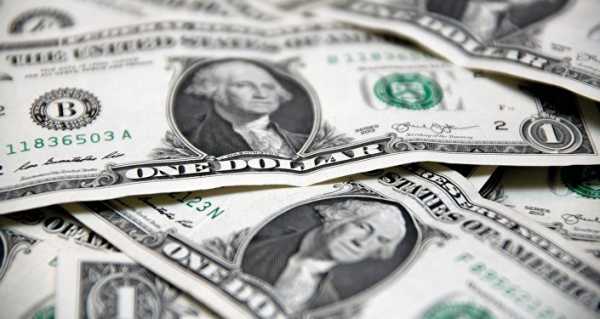
As the dollar continues its decline against the backdrop of an economy battered by the coronavirus pandemic, with the US Federal Reserve pushing for quantitative easing and nearly-zero interest rates to offset the impact of the health crisis, the greenback’s role as a universal store of value is now being questioned as never before.
Economists worldwide are being forced by the economic downturn generated by the coronavirus pandemic to re-assess the global role of the US dollar, which has lost ground against a range of currencies, dropping nearly 5 percent in July, marking its biggest monthly plunge in more than 10 years.
Gold – a traditional safe haven in volatile times – marched higher, buoyed by investors’ doubts and a jittery market. In an attempt to offset the impact of the COVID-19-wrought devastation, some countries have resorted to other options in their bilateral transactions.
Ditching the Dollar
Russia and China, accordingly, are suggested as availing themselves of an opportunity to forge what has been hinted as a potential “banking” or “financial” alliance to boost “de-dollarisation” collaboration between the two trading partners, Russian-American political scientist Dimitri Simes was cited as saying by the Nikkei Asian Review.
A slew of current figures support the trend, as the US dollar’s share of trade between Moscow and Beijing dropped to a record low of 46 percent in the first quarter of 2020, according to recent figures provided by Russia’s Central Bank and Federal Customs Service.

Russia’s President Vladimir Putin and China’s President Xi Jinping walk after the family photo of leaders of the BRICS emerging economies at the Itamaraty palace in Brasilia, Brazil, Thursday, Nov. 14, 2019
Less than half of transactions between the two countries were made in dollars in the first three months of 2020, with 30 percent being euro-denominated and the remaining 24 percent conducted in the national currencies of the two nations.
In comparison, in 2015 nearly 90 percent of all transactions between Russia and China were conducted in dollars.
Last June, the two countries’ officials penned an agreement to move away from the dollar in bilateral transactions in favour of national currencies – the ruble and yuan – instead.
Is the Dollar Headed for a Crash?
The clout an “alliance” between Russia and China might wield in efforts to ditch the dollar is just one factor potentially driving down demand for the dollar.
Attempts to prop up the ailing economy have driven the US Federal Reserve to “print” money and inject it into the commercial banking system.
By the end of 2020, the Fed is projected to have purchased $3.5 trillion in government securities with these newly created dollars, according to Oxford Economics, yet Wall Street experts warn that by unleashing the printing press, the government risks debasing the US currency, and hastening its crash.
The Fed has also cut its benchmark interest rate to near zero, vowing it will continue to do so until the economy recovers from the coronavirus pandemic.
This comes as the federal deficit more than tripled in the first 10 months of the fiscal year, according to the Treasury Department.
The US budget gap totaled $2.8 trillion from October through July, 224% larger than the $867 billion gap during the same period a year earlier.
Warnings were earlier issued by the International Monetary Fund (IMF) in its August statement.

The seal of the International Monetary Fund is seen on a headquarters building in Washington
With the United States set to double down on its fiscal stimulus to boost economic recovery from the coronavirus pandemic and the actions of the Federal Reserve, there is a growing risk of a sudden loss of confidence in the US dollar, cautioned Zhu Min, Chinese economist who was deputy managing director of the IMF from 2011 to 2016.
Stephen Roach, former chairman of Morgan Stanley Asia, has predicted a looming dollar crash, reported Bloomberg.
“The US economy has been afflicted with some significant macro imbalances for a long time, namely a very low domestic savings rate and a chronic current account deficit”, he said, forecasting that the dollar would plummet 35 percent against other major currencies.
Sourse: sputniknews.com






